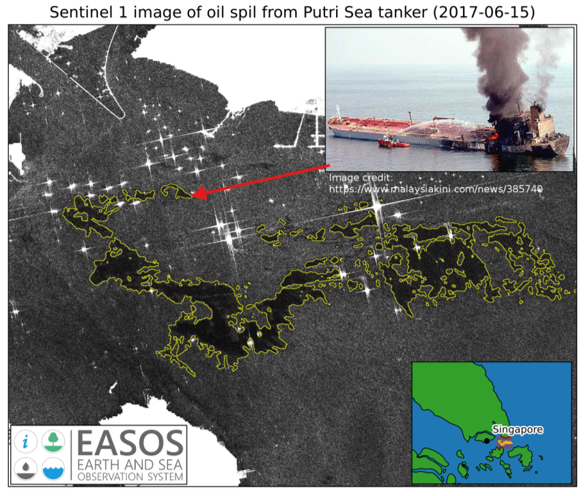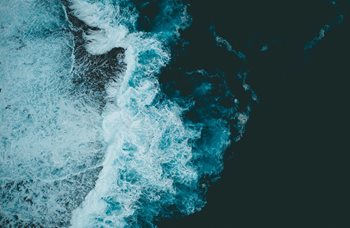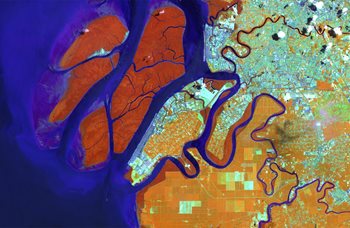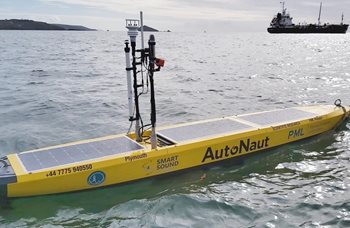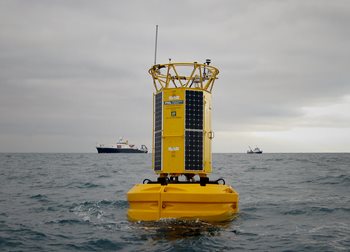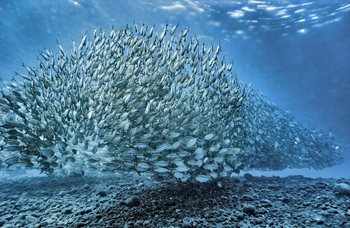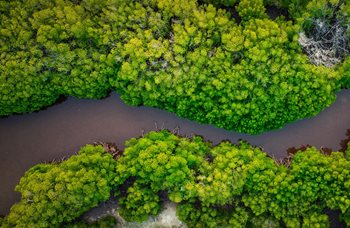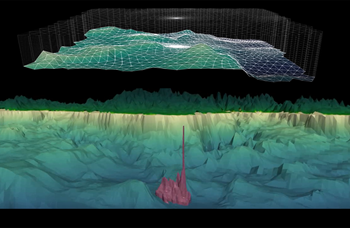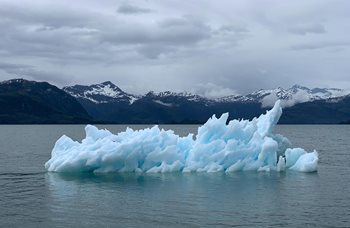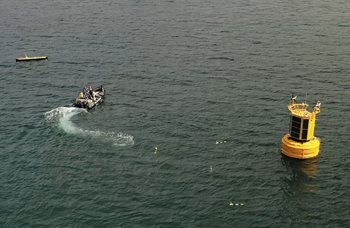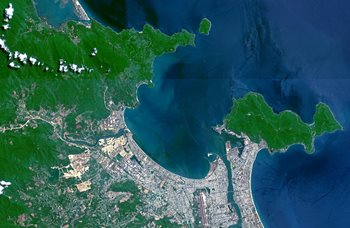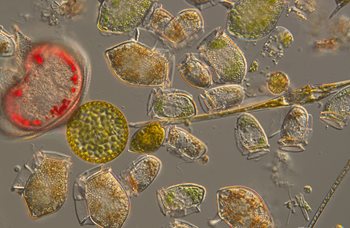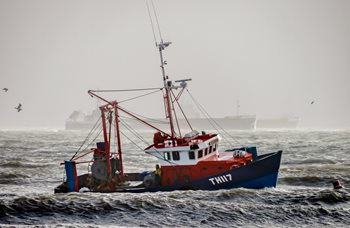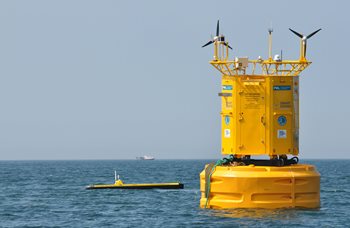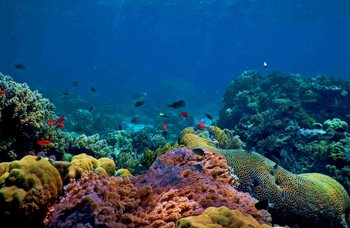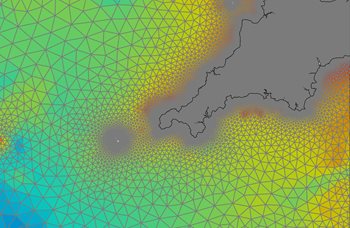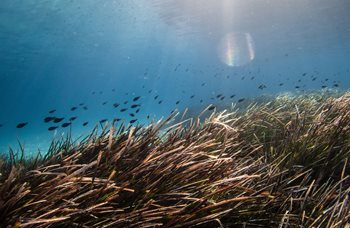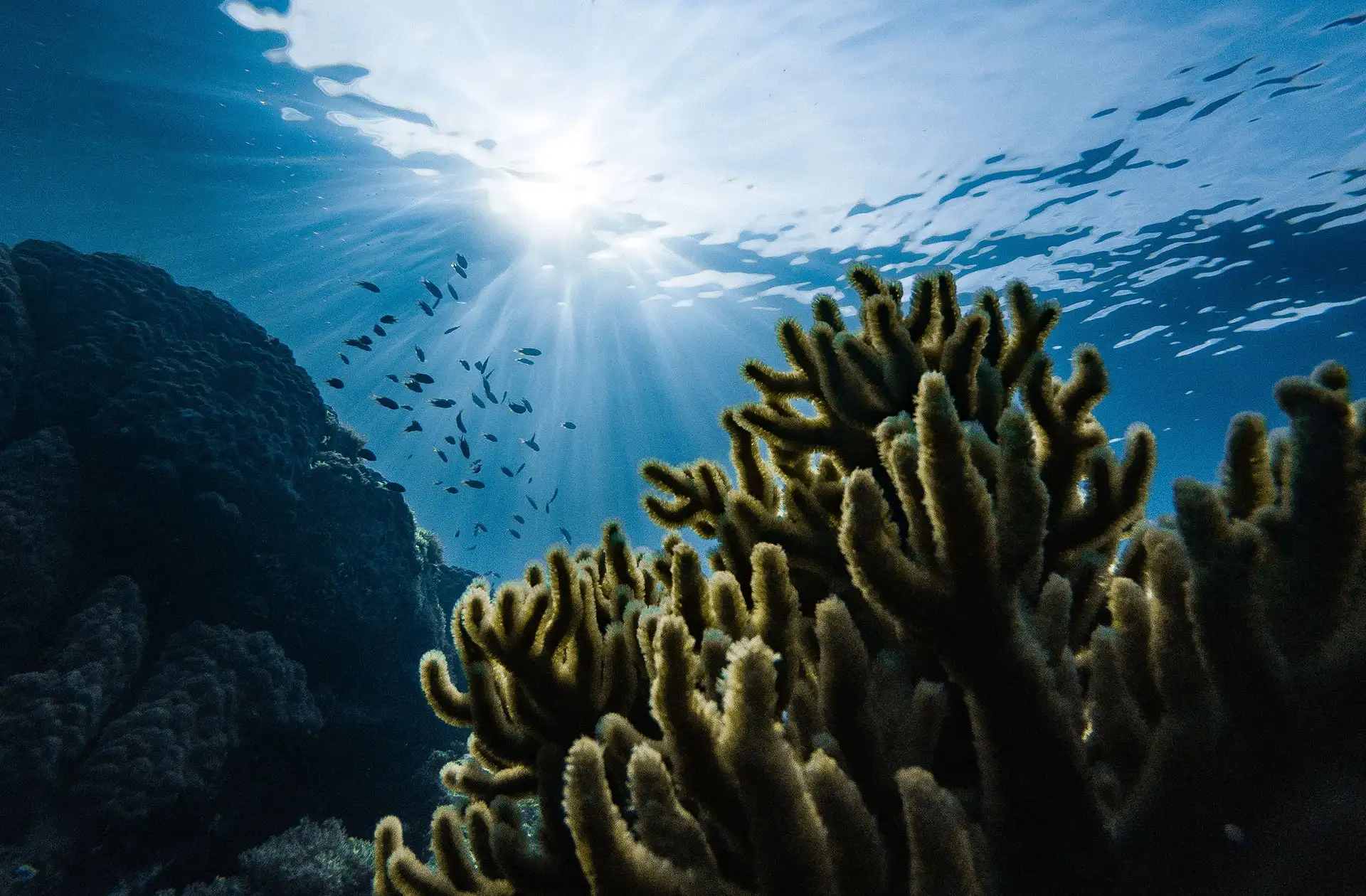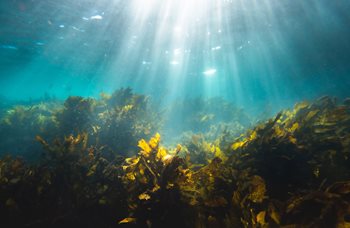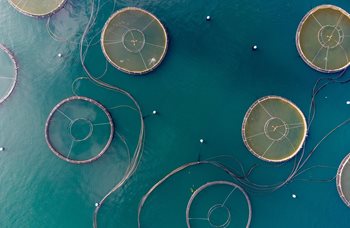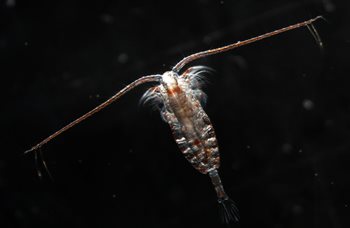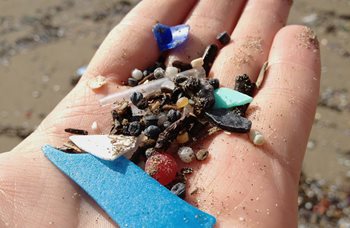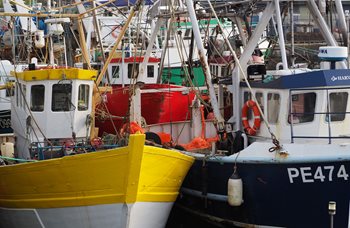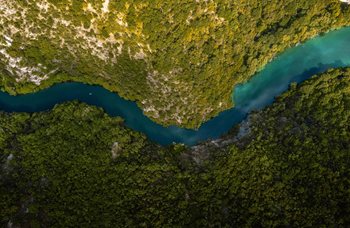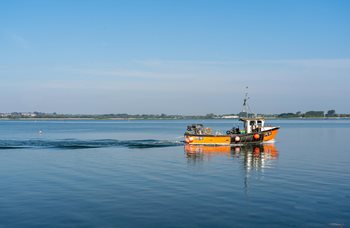Science Topic
Oil pollution
PML routinely monitors areas to detect if oil pollution occurs, so timely action can be taken.
PML have developed a Machine Learning algorithm to automatically detect oil slicks from satellite data. By routinely downloading and processing satellite data after every overpass and applying this automated oil slick detection it is possible to monitor areas for possible slicks and alert government authorities so that timely action can be taken.
The technique was developed in the Malacca strait, one of the busiest shipping lanes in the world, where oil spills are known to have disastrous consequences. It is currently being used as part of the EO4SD project to monitor oil spills off the coast of West Africa. Through this monitoring, regular discharges off the coast of Ghana have been identified. The commercial service developed in EASOS is being offered to government and industry through PML Applications.
Satellite monitoring of oil spills
Download this informative brochure to find out more about how PML is using advanced techniques to support detection and clean-up of oil spills.
Download the PDF (4.3MB)Support oil pollution research
Resources and Links
EASOS Marine Watch case studyCapabilities
- Operational Satellite Data Processing
- Automated Oil Spill Detection
- Expertise in image interpretation
Selected publications
Kurekin, AA; Loveday, BR; Clements, O; Quartly, GD; Miller, PI; Wiafe, G; et al. 2019. Operational Monitoring of Illegal Fishing in Ghana through Exploitation of Satellite Earth Observation and AIS Data. Remote Sensing.
People who work in this area of research
Dr Elizabeth C. Atwood
Earth Observation Data Analyst
liat@pml.ac.uk
Dr Dan Clewley
Senior Research Software Engineer
dac@pml.ac.uk
William Jay
Geospatial Research Software Engineer
wja@pml.ac.uk
Dr Andrey Kurekin
Marine Earth Observation Scientist
anku@pml.ac.uk
Dr Mark Warren
Remote sensing scientist
mark1@pml.ac.uk
